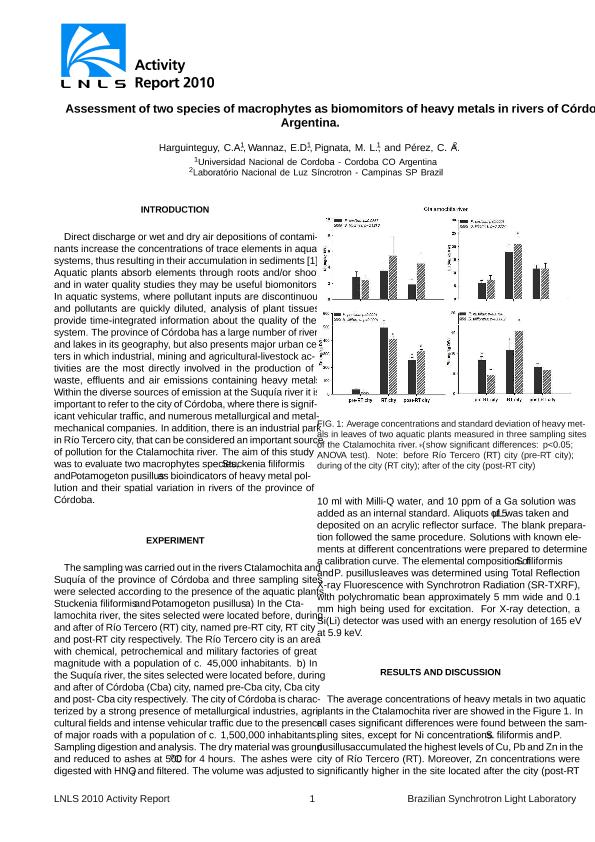Artículo
Assessment of two species of macrophytes as biomomitors of heavy metals in rivers of Córdoba, Argentina
Fecha de publicación:
12/2011
Editorial:
Brazilian Ministry of Science and Technology / Brazilian Association for Synchrotron Light Technology
Revista:
LNLS 2010 Activity Report. Brazilian Synchrotron Light Laboratory
ISSN:
1518-0204
Idioma:
Inglés
Tipo de recurso:
Artículo publicado
Clasificación temática:
Resumen
Direct discharge or wet and dry air depositions of contaminants increase the concentrations of trace elements in aquatic systems, thus resulting in their accumulation in sediments. Aquatic plants absorb elements through roots and/or shoots and in water quality studies they may be useful biomonitors. The aim of this study was to evaluate two macrophytes species, Stuckenia filiformis and Potamogeton pusillus as bioindicators of heavy metal pollution and their spatial variation in rivers of the province of Córdoba. The sampling was carried out in the rivers Ctalamochita and Suquía of the province of Córdoba. The elemental composition of S. filiformis and P. pusillus leaves was determined using Total Reflection X-ray Fluorescence with Synchrotron Radiation (SR-TXRF). In all cases significant differences were found between the sampling sites, except for Ni concentrations. S. filiformis and P. pusillus accumulated the highest levels of Cu, Pb and Zn in the city of Río Tercero. Moreover, Zn concentrations were significantly higher in the site located after the city. As for the Suquía river, the highest values of Cu, Pb and Zn were found after the city of Córdoba. The species S. filiformis and P. pusillus behaved as effective biomonitors of aquatic quality.
Palabras clave:
Biomomitors
,
Heavy Metals
,
Surface Water
Archivos asociados
Licencia
Identificadores
Colecciones
Articulos(IMBIV)
Articulos de INST.MULTIDISCIPL.DE BIOLOGIA VEGETAL (P)
Articulos de INST.MULTIDISCIPL.DE BIOLOGIA VEGETAL (P)
Citación
Harguinteguy, Carlos Alfredo; Wannaz, Eduardo Daniel; Pignata, María Luisa; Pérez, Carlos A.; Assessment of two species of macrophytes as biomomitors of heavy metals in rivers of Córdoba, Argentina; Brazilian Ministry of Science and Technology / Brazilian Association for Synchrotron Light Technology; LNLS 2010 Activity Report. Brazilian Synchrotron Light Laboratory; 12-2011; 1-2
Compartir




